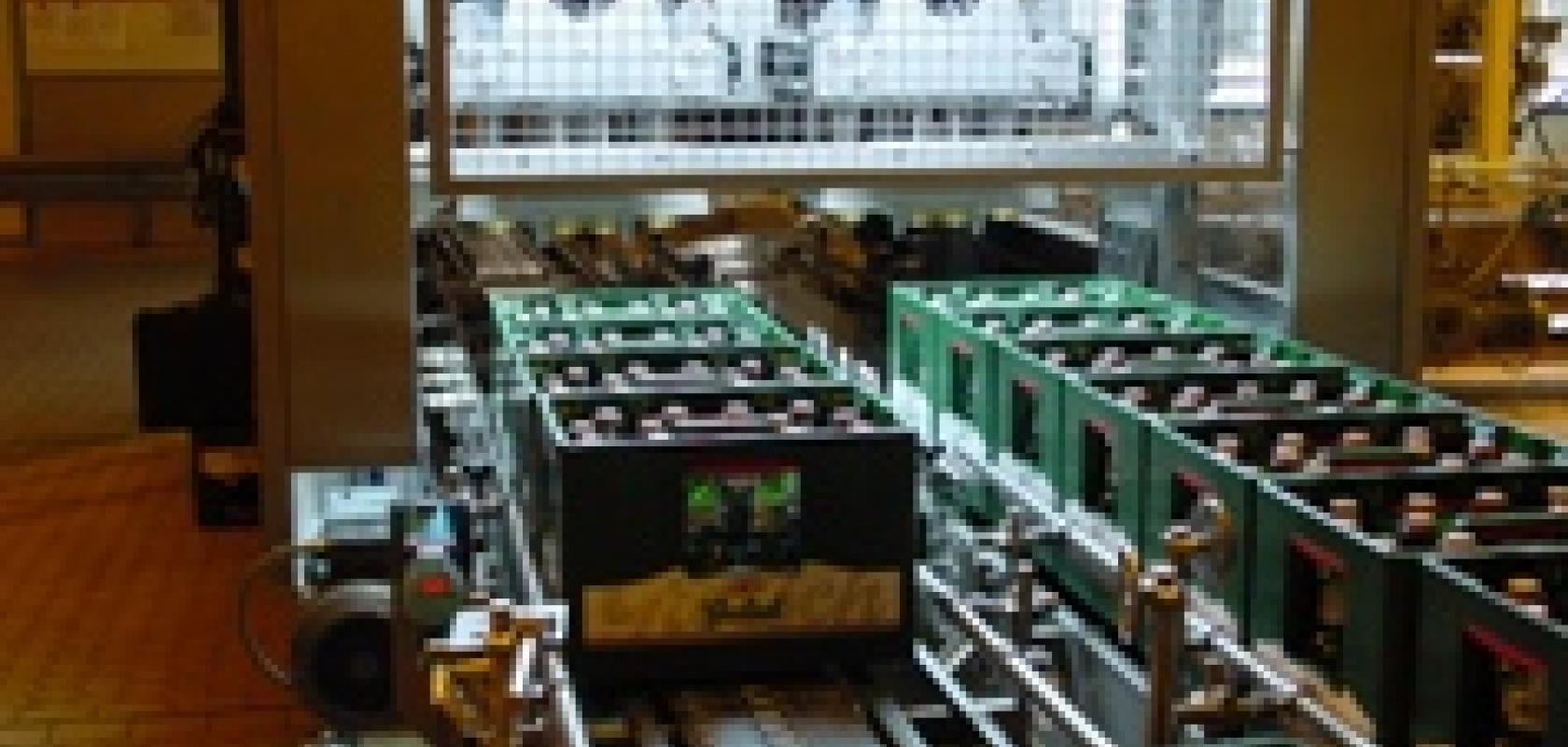The Grolsch brewery in the Netherlands, one of the largest Dutch breweries, has installed a system to rotate and align bottles in crates. The bottles, which are visible through the opening in the crate, are rotated so that their labels point symmetrically toward the outside. This allows Grolsch to project the optimal image to the consumer in the supermarket. Bottles are rotated at a rapid rate of 400 per minute, with the end goal of influencing the customer.
The system was designed by Rico-Maschinenbau and Aku.Automation, both based in Germany, and relies on VisionPro software from Cognex. It operates with two parallel conveyor belts transporting up to 3,000 crates per hour through the bottle alignment machine. Ten crates are processed per cycle. Two industrial cameras are positioned approximately 1.5 metres above the conveyor belts, with each camera monitoring the five crates on its respective belt. The two cameras are intelligently embedded into homogenous area lighting units, which provide optimal illumination without casting undesirable shadows.
Each crate holds 16 swing-top bottles, but only eight bottles in each crate have to be rotated to be visible through the side opening. Two factors make it easy for the machine to identify the position of 80 bottles per cycle. First, the alignment of the swing-top cap with Grolsch logo ensures that the bottle labels are always applied at the same position ahead of the rotation process. Second, VisionPro, the PC vision platform from Cognex, was specially designed for multi-camera applications with low cycle rates and large numbers of evaluation targets.
The bottles are aligned after the object localisation step. Special pneumatic grippers for swing-top caps from Rico grip the bottles and lift them up slightly. Small servomotors then rotate the bottles to the correct position based on a rotation angle in degrees, which is individually determined for each bottle.
Both the illumination systems and the cameras are accommodated in very sturdy, watertight stainless steel housings. This was necessary to avoid damage to equipment during cleaning operations of the plant.


